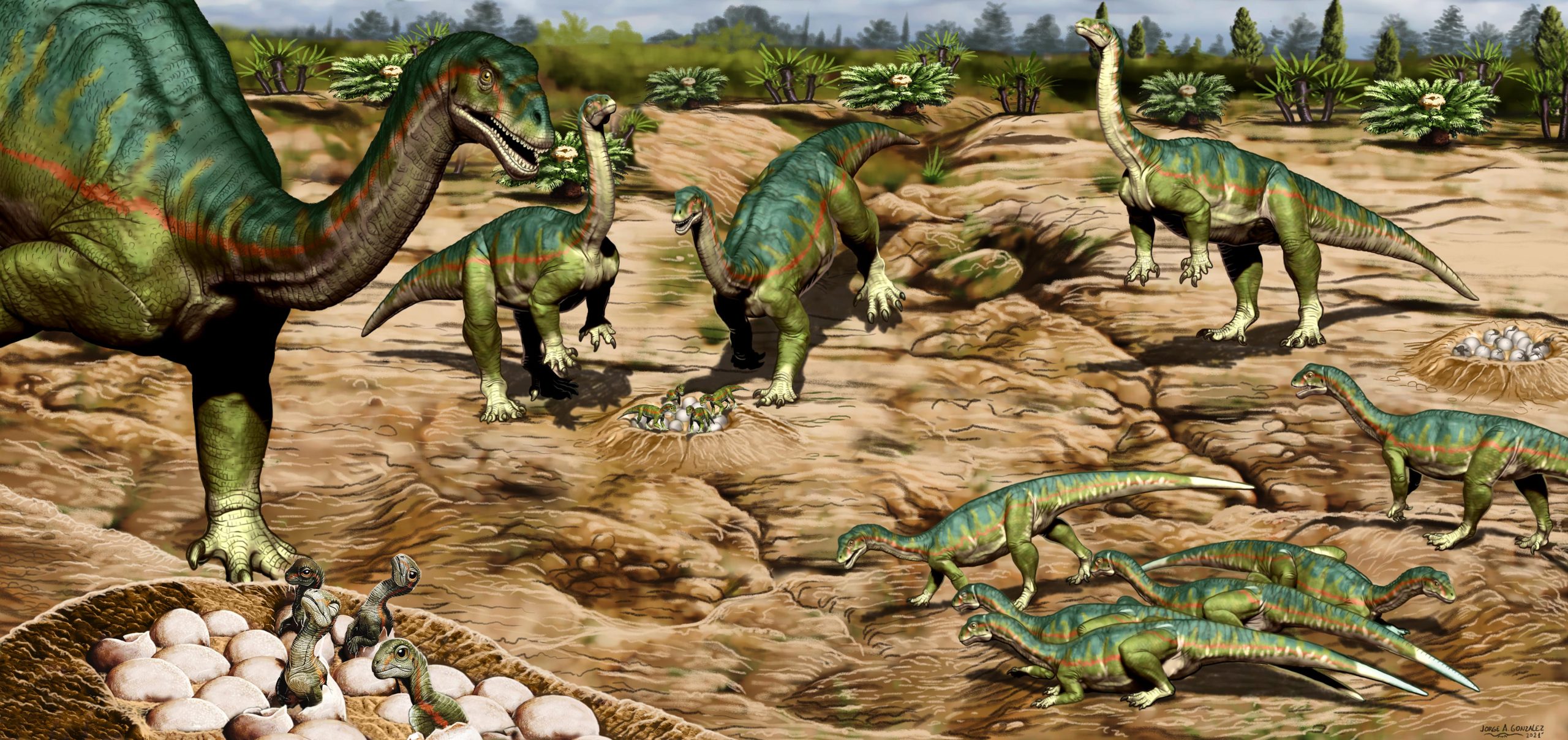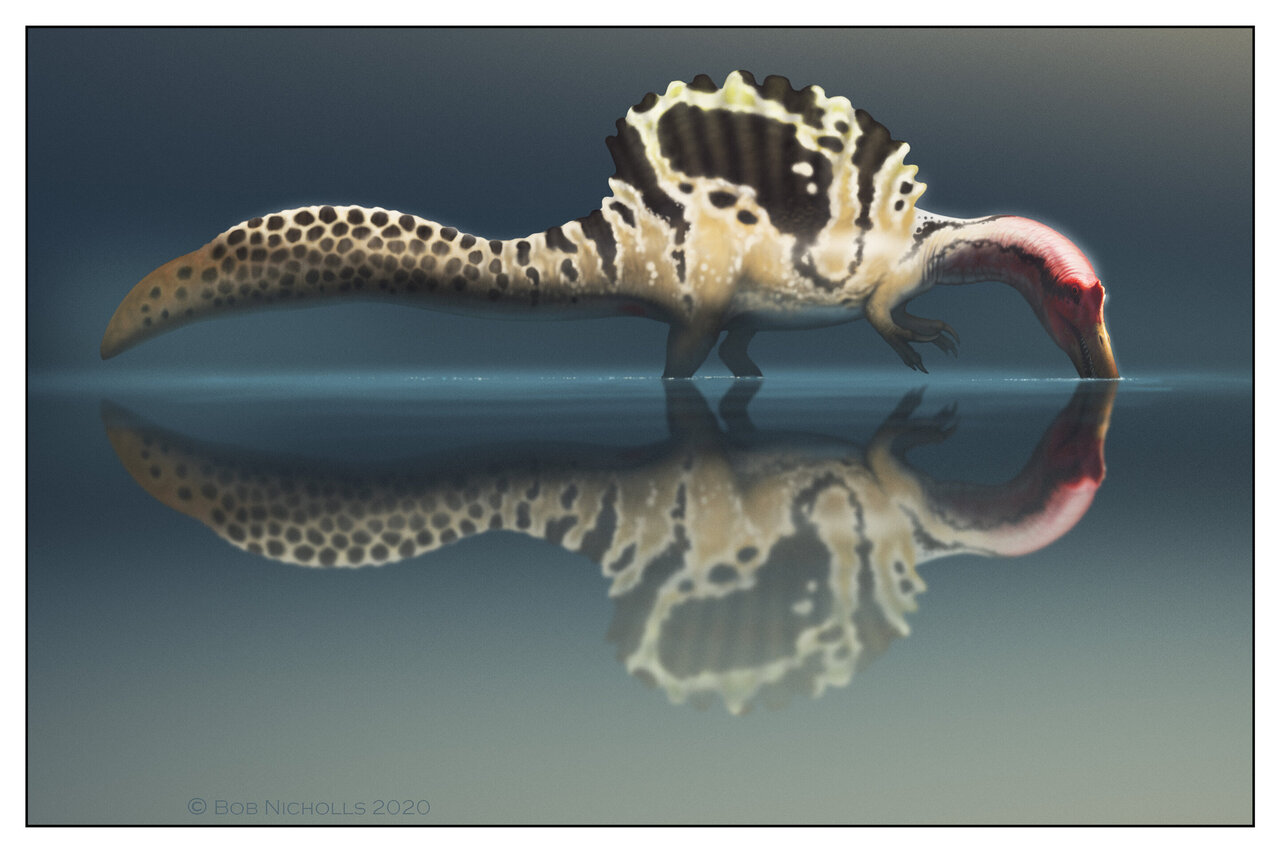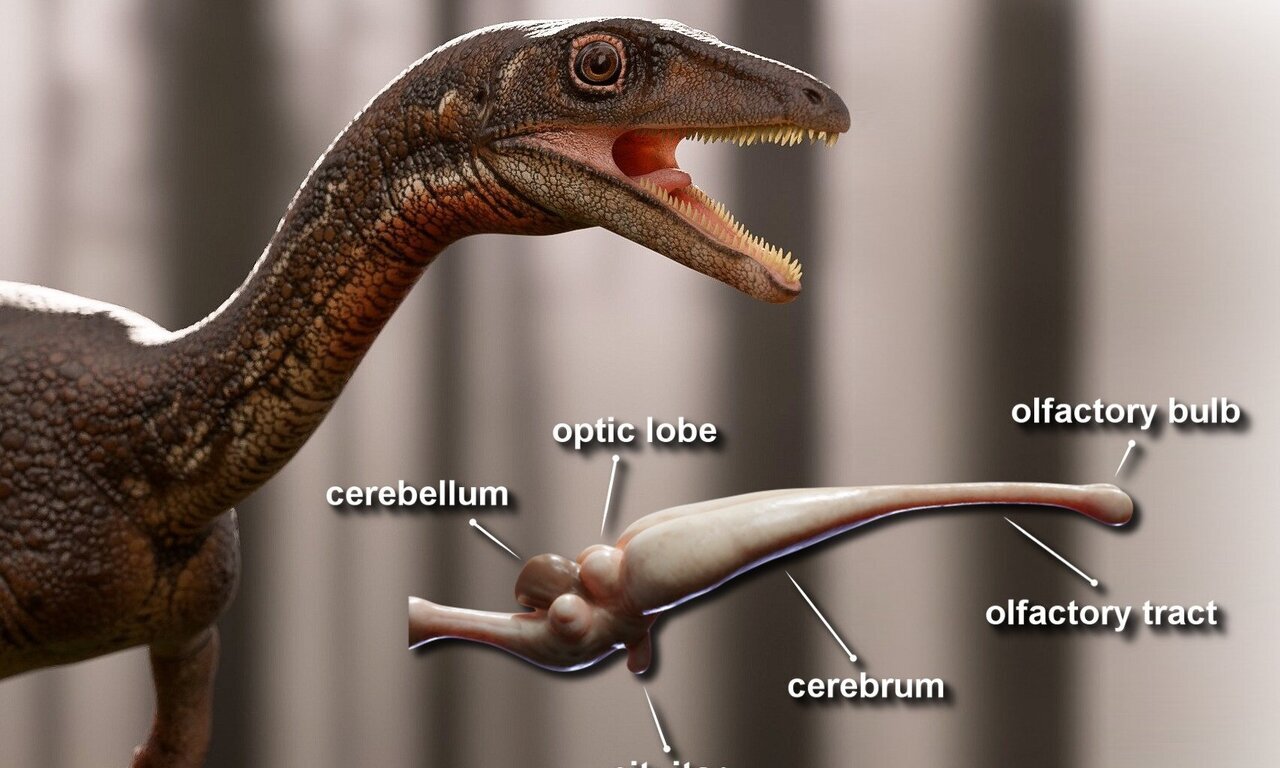Dinosaurs evolved a remarkable diversity of dietary adaptations throughout the Mesozoic era, but the origins of different feeding modes are uncertain. Feeding habits of early dinosaurs have mostly been inferred from comparisons of jaw morphology with living analogs. By looking at the tooth shapes of the earliest dinosaurs and simulating their tooth function with computational modeling, University of Bristol paleontologists were able to compare them to living reptiles and their diets. The findings show that many groups of plant-eating dinosaurs were ancestrally omnivorous and that the ancestors of long-necked herbivorous dinosaurs ate meat; this ability to diversify their diets early in their evolution likely explains their evolutionary and ecological success.

Early dinosaurs and their diets: Lesothosaurus is an omnivore, Buriolestes is a carnivore, and Thecodontosaurus is an herbivore. Image credit: Gabriel Ugueto.
The earliest dinosaurs are enigmatic: they were much smaller than their later relatives and for most of the Triassic period, they were in the shadow of the crocodile-like reptiles.
It is unknown how diverse they were in terms of diets and ecology, but paleontologists know something must have happened in the Triassic that allowed dinosaurs to endure the Triassic-Jurassic mass extinction and adapt in its aftermath, becoming the dominant group for the rest of the Mesozoic.
“Soon after their origin, dinosaurs start to show an interesting diversity of skull and tooth shapes,” said University of Bristol’s Dr. Antonio Ballell.

“For decades, this has made paleontologists suspect that different species were already experimenting with different kinds of diets.”
“They have compared them to modern lizard species and tried to infer what they ate based on the similarities in their teeth.”
“We investigated this by applying a set of computational methods to quantify the shape and function of the teeth of early dinosaurs and compare them to living reptiles that have different diets.”
“This included mathematically modeling their tooth shapes and simulating their mechanical responses to biting forces with engineering software.”

“With this battery of methods, we were able to numerically quantify how similar early dinosaurs were to modern animals, providing solid evidence for our inferences of diets,” said University of Bristol’s Professor Mike Benton.
“Theropod dinosaurs have pointy, curved and blade-like teeth with tiny serrations, which behaved like those of modern monitor lizards.”
“In contrast, the denticulated teeth of ornithischians and sauropodomorphs are more similar to modern omnivores and herbivores, like iguanas.”

The study is also innovative in using machine learning models to classify the earliest dinosaurs in different diet categories based on their tooth shape and mechanics.
“Our analyses reveal that ornithischians — the group that includes many plant-eating species like the horned dinosaurs, the armored ankylosaurs and the duck-billed dinosaurs — started off as omnivores,” said University of Bristol’s Professor Emily Rayfield.
“And another interesting finding is that the earliest sauropodomorphs, ancestors of the veggie long-necked sauropods like Diplodocus, were carnivores.”

“This shows that herbivory was not ancestral for any of these two lineages, countering traditional hypotheses, and that the diets of early dinosaurs were quite diverse.”
“It seems that one of the things that made the first dinosaurs special is that they evolved different diets throughout the Triassic, and we think this might have been key for their evolutionary and ecological success,” Dr. Ballell said.
Source: sci.news








